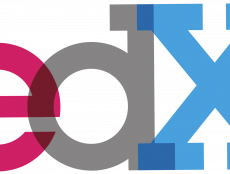
Turbulence continues to ripple through the higher education textbook market. While Pearson has shed their once-profitable instructional supplement wing, Cengage has pivoted to a subscription model, and numerous smaller companies have sought to capture a section of this disrupted sector. Earlier in October, the Department of Education awarded the first grant of the newly legislated Open Textbooks Pilot Program to the University of California, Davis to develop openly licensed educational resources (OER) for its students.
All this comes as a response to the previously unchecked rise in college textbooks, which has outpaced the rate of inflation many times over during the past decade.
“The cost of college textbooks has almost doubled in the past 10 years,” said U.S. Secretary of Education Betsy DeVos. “This program is an important step toward reducing barriers, expanding access and increasing choice for students who want to attend college or learn a trade. I commend Senators Durbin, King, and Smith, as well as Representatives Polis and Sinema for their commitment to getting this pilot program passed through Congress, and I look forward to working together to make textbooks more easily accessible for students, professors and the public.”
What remains unclear, however, is what an OER course—or even an OER degree—will look like. One OER initiative led by SRI Education, Achieving the Dream, and rpk GROUP is following and aiding 38 colleges across the U.S. as they develop OER courses and degrees. The OER Degree Initiative launched last year and will conclude in September 2019. This month, they put out an interim report.
The report highlights many points already understood about OER. To begin, it saves students money. The SRI team of authors headed by Rebecca Griffiths estimated that the initiative had saved students anywhere from $6.5 million to $12 million collectively. What’s more, these savings make a huge difference for Pell Grant recipients. Griffiths et al found that traditional textbooks could account for as much as 80% of the cost of attending college for this population.
But other factors involved in implementing OER have largely gone unexamined. The report detailed a few points that don’t see a huge amount of discussion.
The Cost of OER Is Complicated
The cost of putting together OER content for a course or degree path will ultimately fall to the university. It may involve contracting third parties to do it, but for most of the colleges participating in the survey, it started out as a grassroots effort. Professors might do it all themselves. Others work in teams.
Griffiths et al also identified a group of employees that were indispensable: librarians and IT staff.
“Librarians, teaching and learning center staff, and technology staff played a key role in introducing OER to their campuses at 4 out of the 11 colleges. At a few colleges, administrators drove the decision to launch OER degrees, but they were usually building off existing OER activity. Students at some colleges had advocated for textbook affordability, and in several cases were actively involved in OER initiatives, for example conducting student surveys about affordability at one college.”
Efforts to develop OER came from numerous parties in numerous degrees.
“Approximately one-third of expenditures were for general support and administration, and about two-thirds directly funded development of OER courses. Stipends and release time covered only about 20% of the time instructors reported spending on course development. The development cost per course averaged $11,700, but this rose to $18,200 for courses developed by teams of instructors. One area where financial impacts were smaller than expected was lost revenue from bookstore commissions/profits, which were estimated to average $14,000 per institution during the two years of the grant. Overall, the five cost partner colleges contributed more than 20% of the budgeted resources, averaging $269,000 over two years, for their programs. However, when combined with the unbudgeted faculty and staff time that was reallocated to OER activities, the cost partners supported nearly 60% of the degree pathway development costs, which averaged $494,000 over the two years of the grant.”
Can OER Maintain Quality?
Under the old system, work fell to the publishers to update and maintain the educational content and resources offered by their companies. Using OER, someone else will have to do that task. Many worry that if the job falls to professors who would much rather spend their time conducting research, quality will suffer. The report, however, provided a positive prognosis on the issue, with many professors preferring OER curation:
“A number of instructors reported that, with OER, they better aligned course materials with learning objectives and were more intentional about assignments. Faculty members at almost all colleges reported greater student engagement because of the use of more contemporary and relevant materials. Students mirrored their reports, saying the OER materials were better aligned with course outcomes and more engaging. In most cases, however, teachers did not report that their existing pedagogical practices changed substantially with OER.”
Will OER Decrease College Completion Time?
Some have suggested that OER will actually speed up the time it takes students to complete a degree. The logic goes like this. The high costs of textbooks prevented students from purchasing all the resources needed per course. That lack of resources set them back academically, and in some cases, it meant the difference between passing and failing. With OER provided to every student, those learners who would have failed won’t. That success will allow them to complete their degree faster and cheaper.
But as the report states:
“It is too soon to know whether students who take multiple OER courses progress more quickly and successfully. While some instructors saw signs of increased engagement, they generally did not claim to see differences in course outcomes. Few students said they were likely to perform better in OER courses. In the coming year SRI will analyze impacts on academic outcomes associated with OER degree courses and will be able to shed more light on how these pathways effect progress to degree.”
The textbook market right now is nothing if not uncertain. It will take time for OER to find its role in higher education.
Featured Image: Nycholas Souza, Unsplash.









[…] This content was originally published here. […]
[…] design must include empathy for both the teacher and the student in order to be effective. The pandemic has highlighted that if this foundational design philosophy is missing, engagement rates and true learning […]
[…] the world of education shifts further into the realm of online learning, new research has emerged to track this transition. Whether the drastic move […]
[…] the world of education shifts further into the realm of online learning, new research has emerged to track this transition. Whether the drastic move […]
[…] time, and fend for themselves. Their interactions with their professors, faculty, and new peers, play a critical role in their academic and social growth. These interactions help them grow into adults, form bonds, and further establish a path for their […]
[…] time, and fend for themselves. Their interactions with their professors, faculty, and new peers, play a critical role in their academic and social growth. These interactions help them grow into adults, form bonds, and further establish a path for their […]